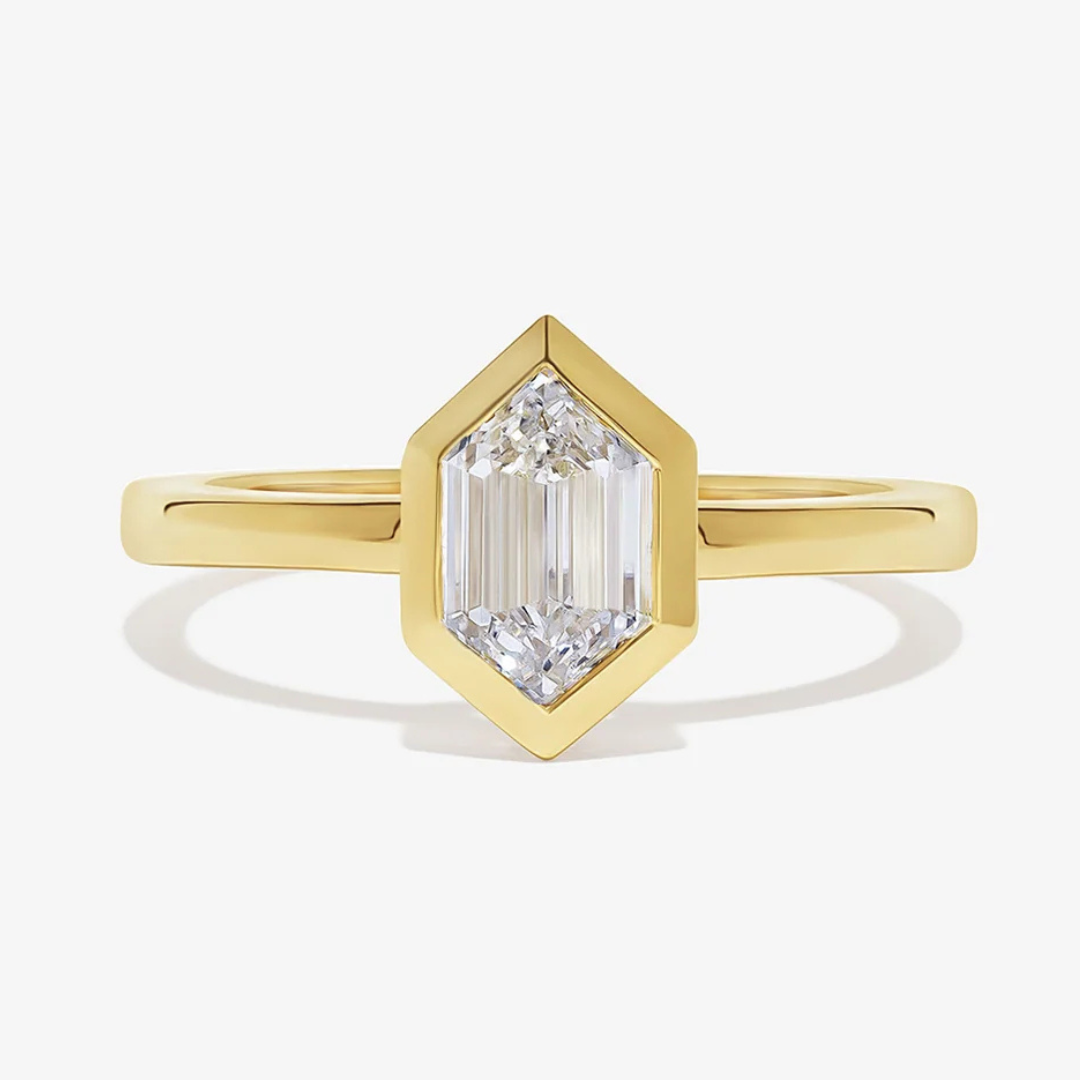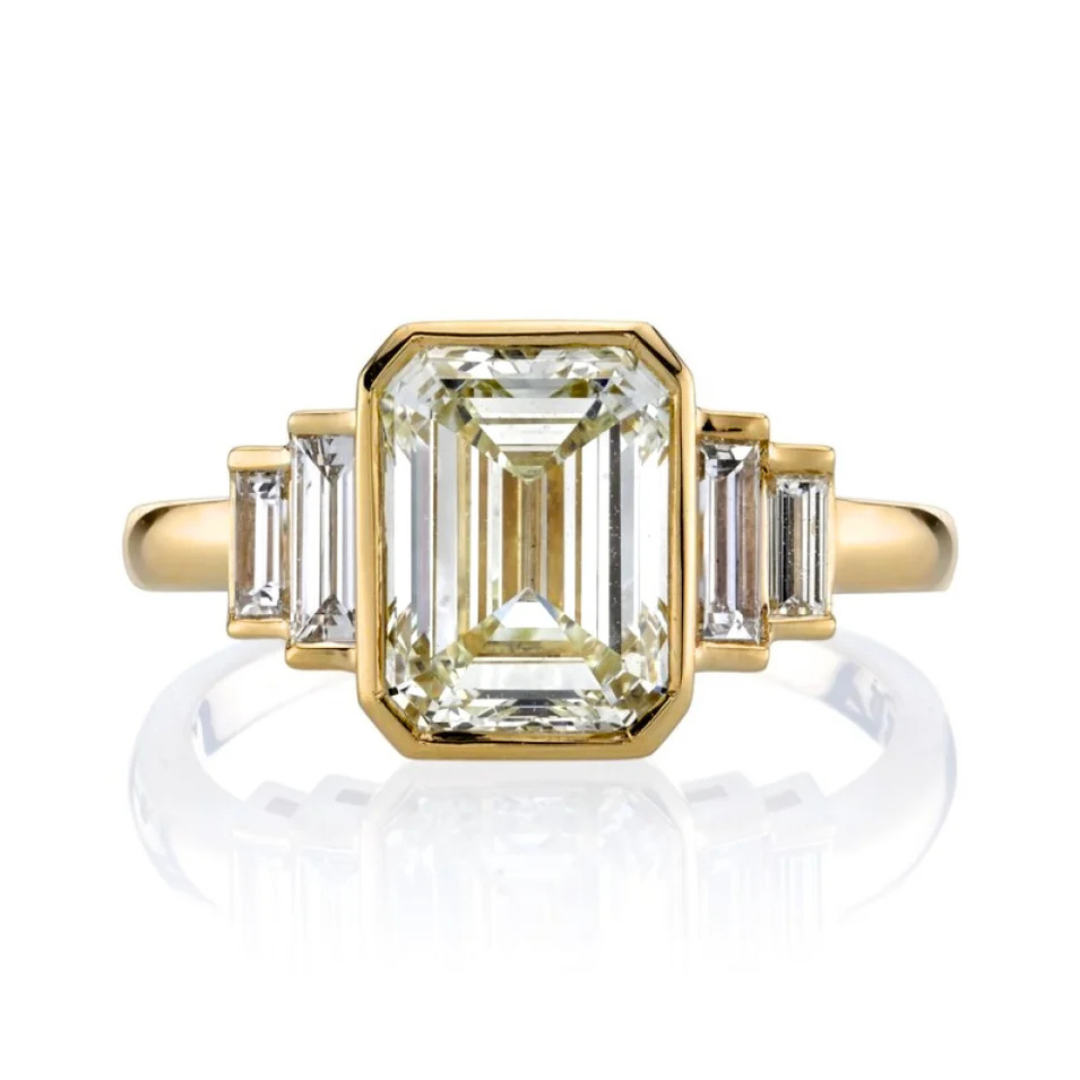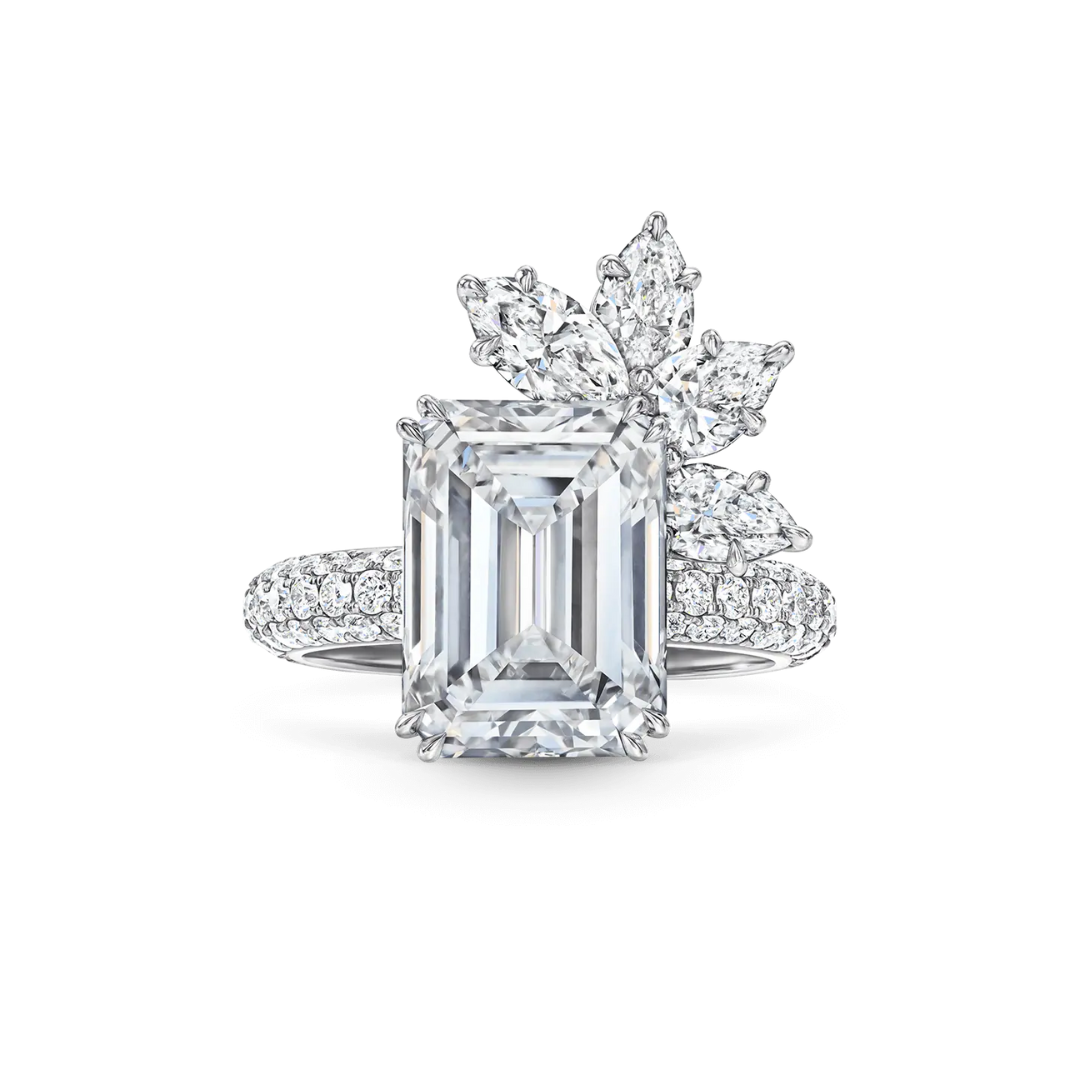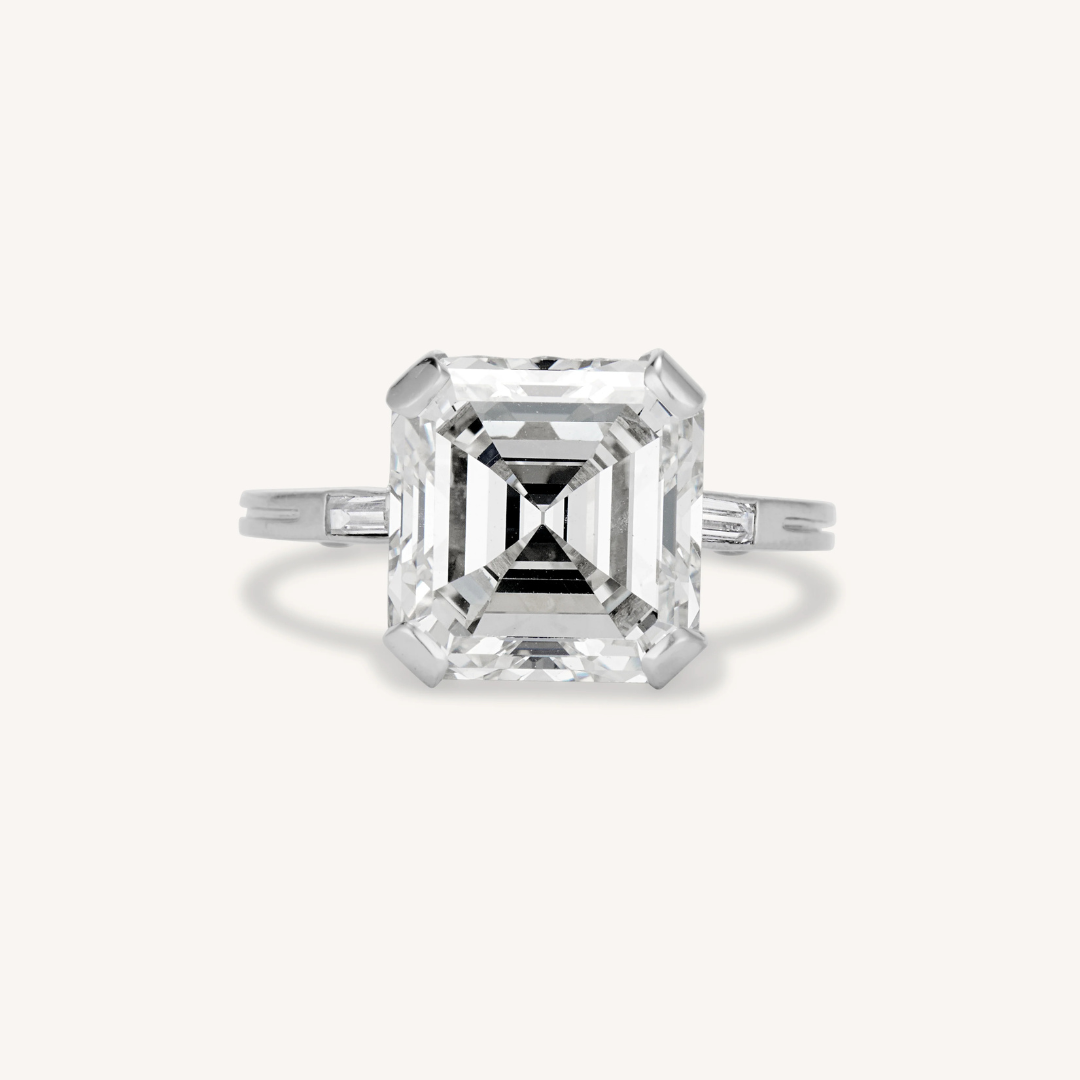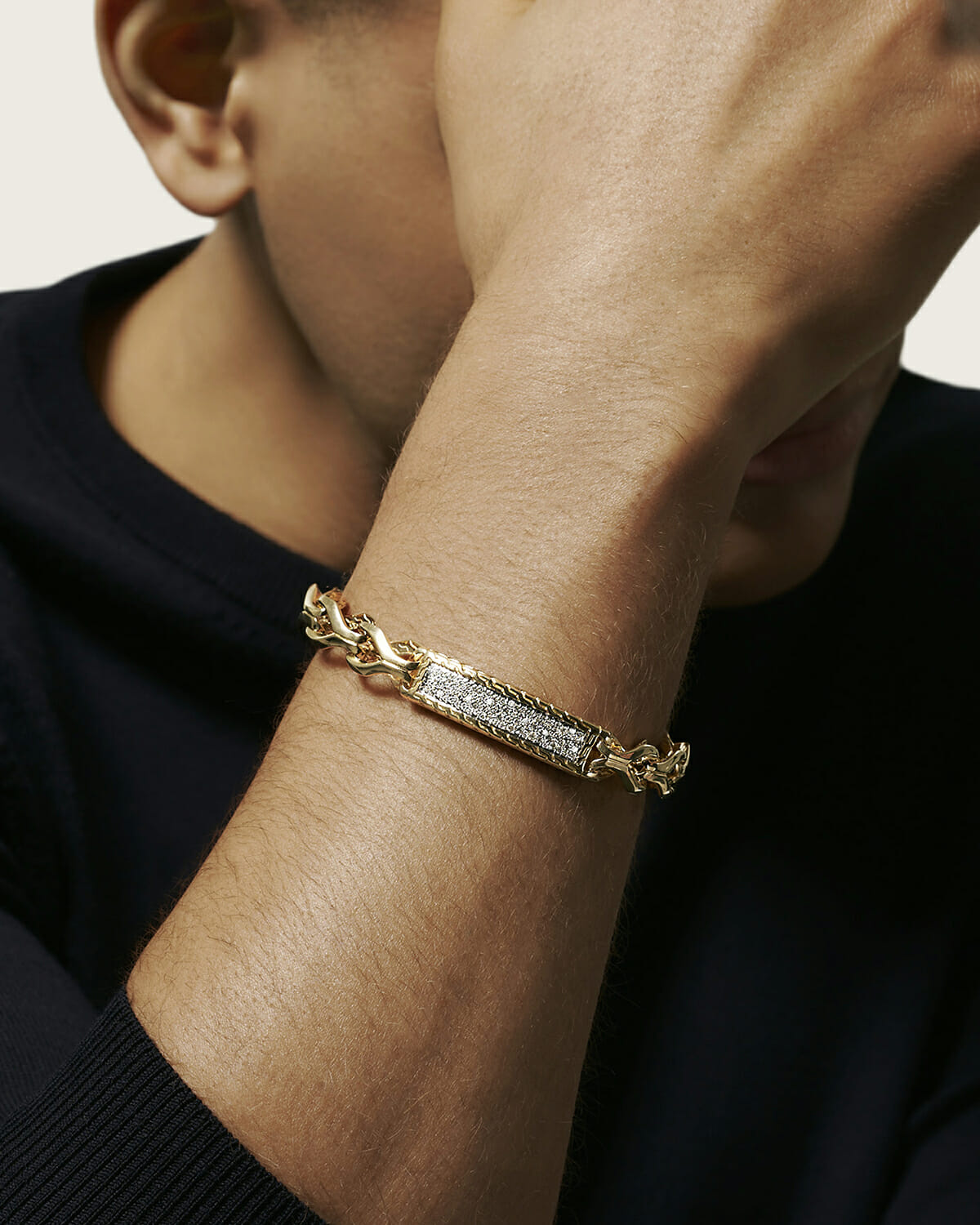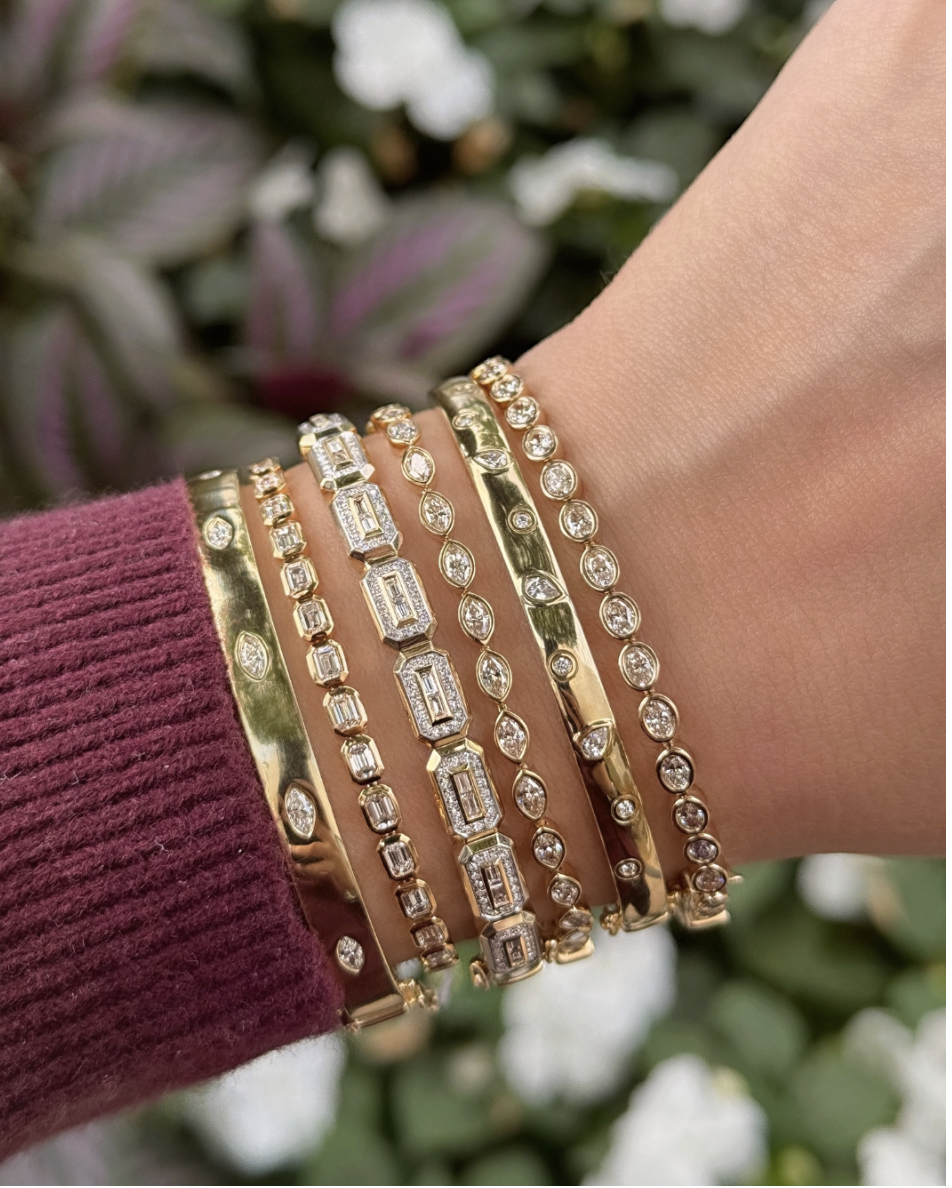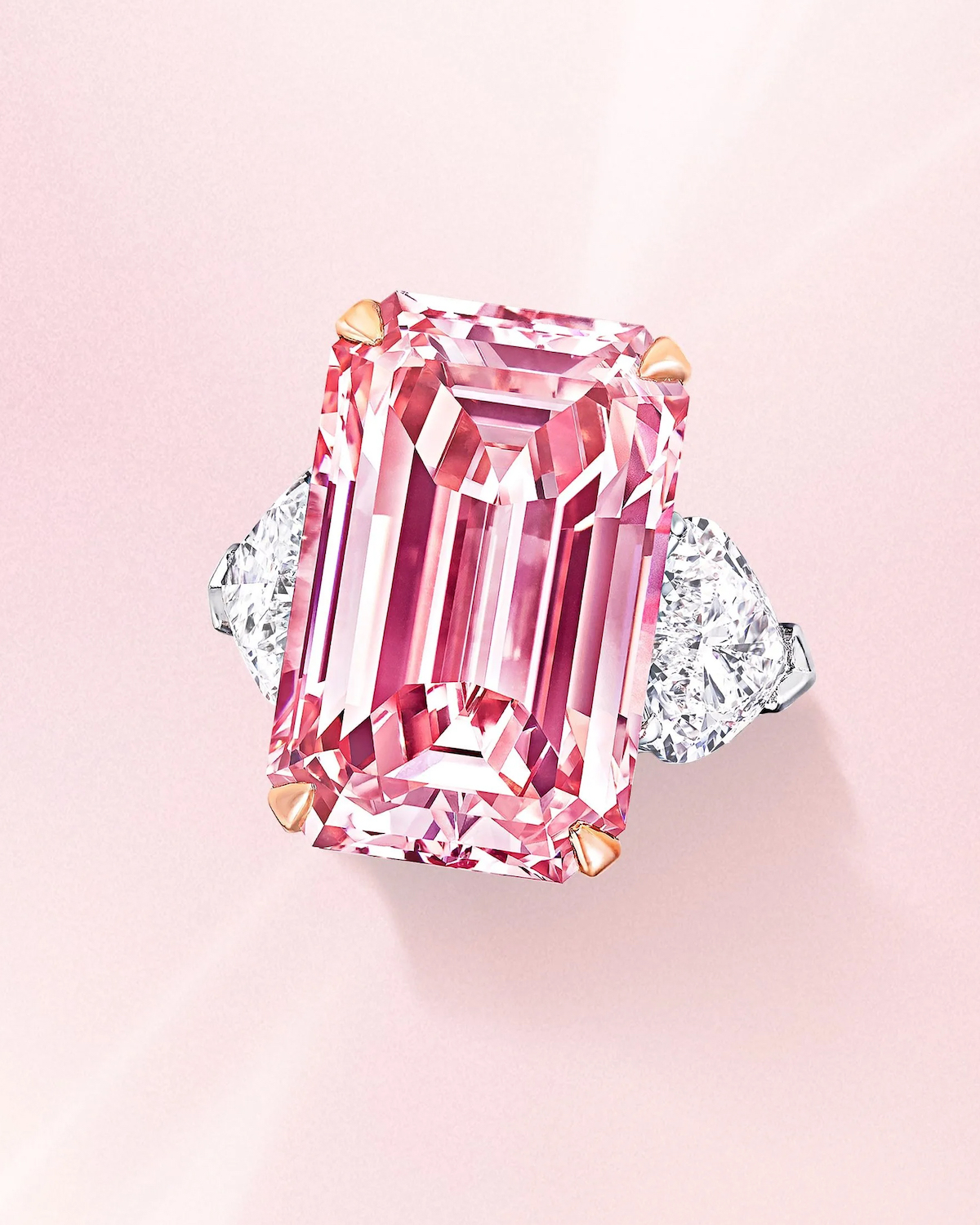Engagement Rings & Weddings
Step Cut Diamonds: A Cutting Style with Endless Possibilities
From emeralds and Asschers to modern hybrids like step-cut ovals and kites, this timeless cutting style offers a bold alternative to brilliant cuts.
Published: October 3, 2025
Written by: Grant Mobley

When people talk about diamonds, they often focus on shape: round, cushion, oval, pear. But behind every shape is something even more fundamental—the faceting style. Two styles dominate modern diamond cutting: brilliant cuts and step cuts. While brilliant cuts maximize sparkle through angled, triangular facets, step cuts create an entirely different effect: a hall-of-mirrors look defined by broad flashes of light and mesmerizing clarity.
Meet the Expert

- Grant Mobley is the Jewelry & Watch Editor of Only Natural Diamonds.
- He is a GIA Diamonds Graduate.
- He has over 17 years of jewelry industry experience, starting with growing up in his family’s retail jewelry stores.
And here’s an important distinction: step cut refers to a style of faceting, not a shape. It’s a method of arranging facets that cutters may apply to various diamond shapes. From the classic emerald-cut to the chic baguette and the striking Asscher, step cuts have been central to diamond history for centuries. Today, cutters are finding new ways to bring the step-cut style into unconventional shapes, resulting in hybrid cuts that offer a fresh perspective on diamonds.
The Origins of Step Cutting Diamonds

The step-cut style dates back to some of the earliest attempts at faceting diamonds. Before technology enabled cutters to maximize brilliance, cutters shaped diamonds to highlight their clarity and the natural geometry of the crystal. By creating long, narrow facets in parallel rows, cutters gave diamonds a refined architectural quality.
This aesthetic matured into what we now call the emerald cut, the oldest and most enduring step cut. The cut first gained popularity in the 16th century for emeralds (hence the name), and cutters later adopted it for diamonds. Its clean lines and large table made it perfect for showing off the crystal’s transparency. Unlike brilliant cuts, which conceal inclusions in a sea of sparkle, step cuts reveal the diamond’s natural purity, meaning they typically require a higher-clarity stone to truly shine.
Classic Step Cut Diamonds: Emerald, Baguette and Asscher Cuts

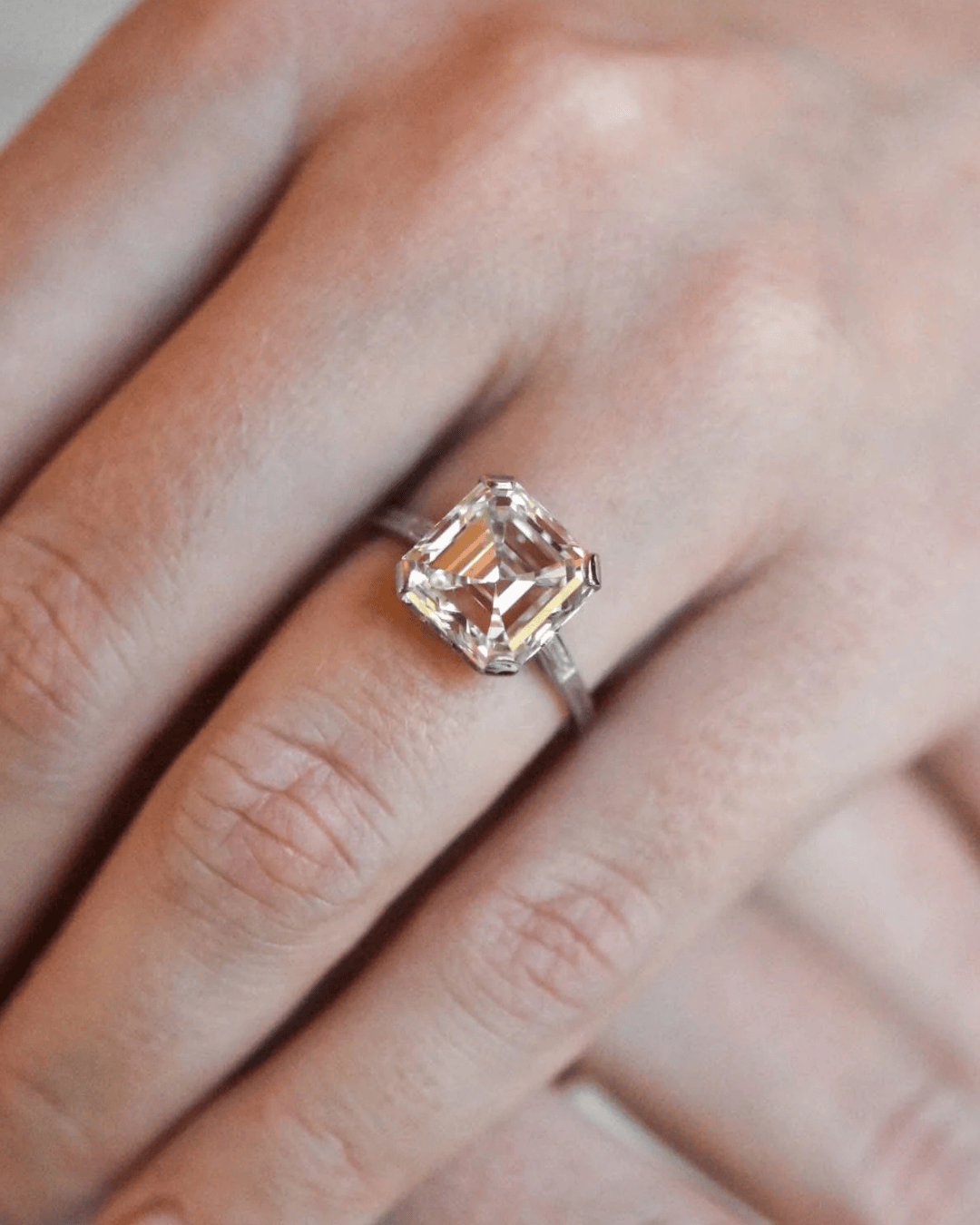
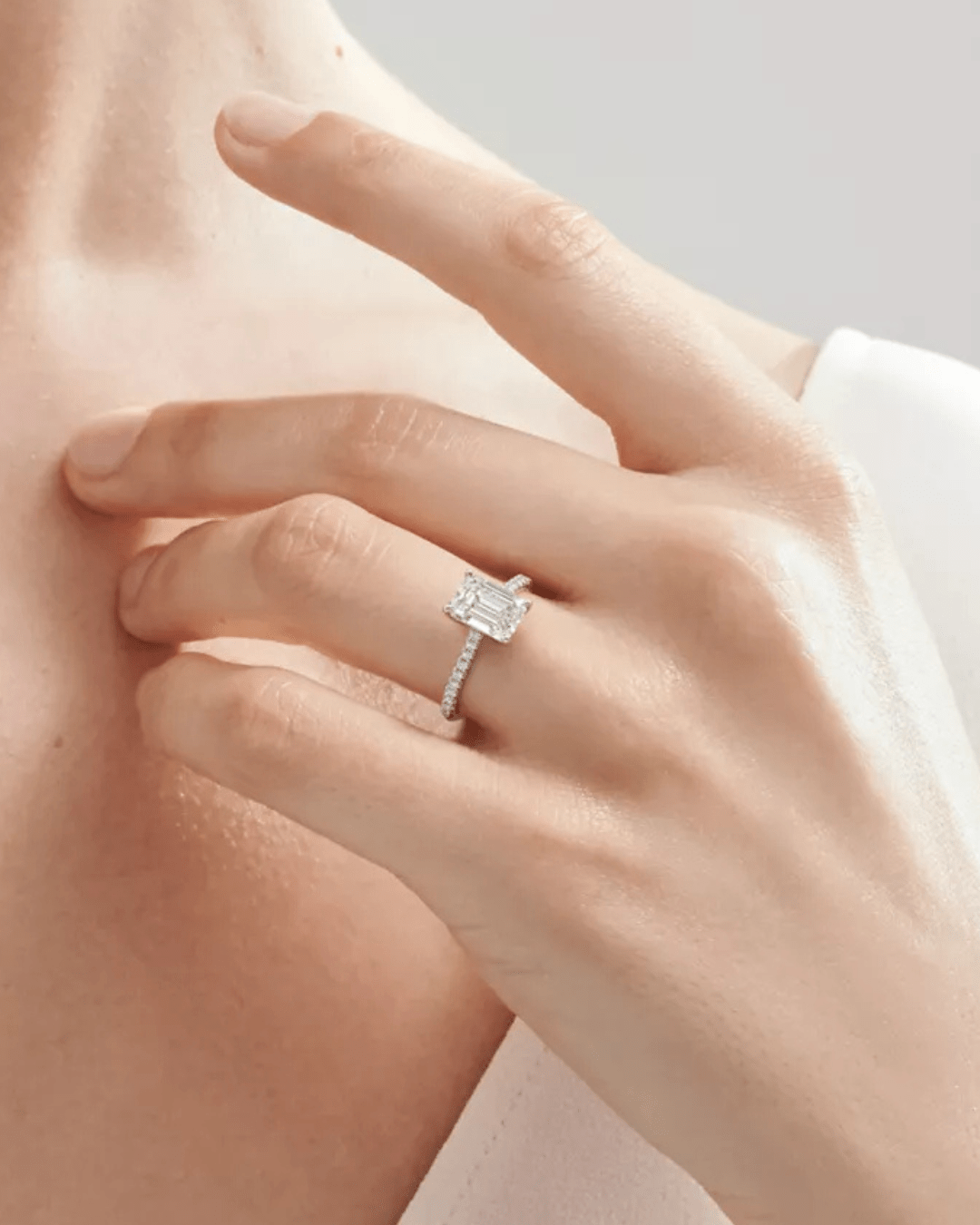
Step cuts became a language of elegance throughout the 20th century, most notably in the Art Deco period, when geometry and symmetry ruled design.
Emerald Cut: Rectangular with cropped corners, the emerald cut embodies sophistication. Its long facets draw the eye inward, creating a “hall of mirrors” effect. Beloved by Old Hollywood and still a favorite among celebrities, the emerald cut is perhaps the most recognizable step-cut diamond shape.
Baguette Cut: Thin and rectangular, with sometimes tapered ends, baguette cuts are often used as side stones to frame a center diamond, although they also appear in chic eternity bands. Their simplicity and straight lines make them versatile building blocks in jewelry design.
Asscher Cut: Invented in 1902 by Joseph Asscher, this cut is essentially a square emerald cut with deeply cropped corners and a higher crown. The result is a mesmerizing windmill effect that feels both vintage and modern at once.
Each of these cuts relies on the same principle: facets arranged in steps, like the tiers of a staircase.
Step Cut Diamonds vs. Brilliant Cut Diamonds
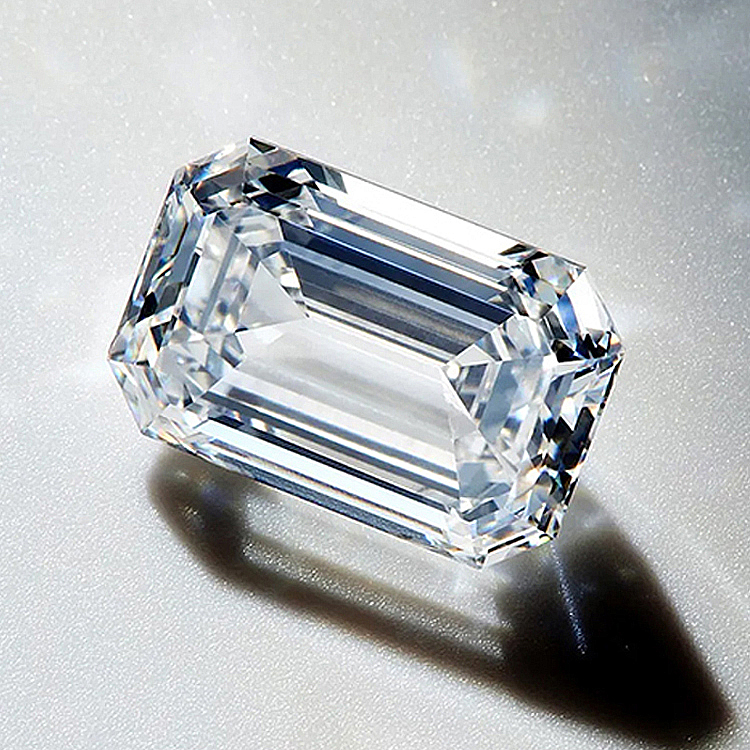
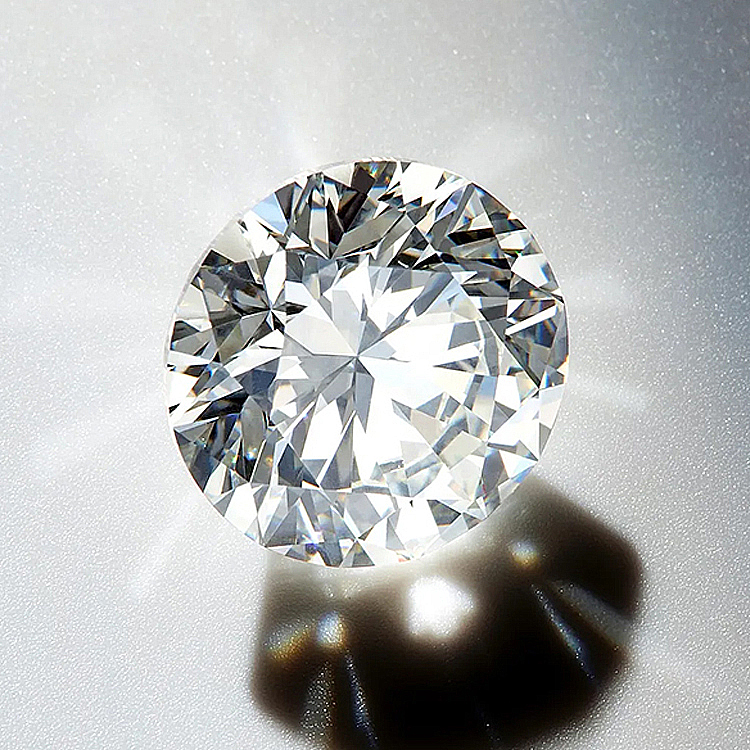
Today’s most common faceting styles—the step cut and the brilliant cut—offer entirely different looks. Brilliant cuts, including the round brilliant, cushion, oval, and pear, are engineered to reflect as much light as possible. Their triangular and kite-shaped facets create a dazzling “disco ball” sparkle that modern audiences are familiar with and love.
Step cuts, by contrast, prioritize elegance over dazzle. Their large tables and long facets don’t explode with sparkle; they glow with broad flashes of light that move across the stone. Think of it as the difference between fireworks and candlelight. Step cuts have a calm, timeless beauty that emphasizes the diamond’s shape, size, and clarity rather than just its brilliance.
Hybrids and Modern Interpretations of Step Cut Diamonds
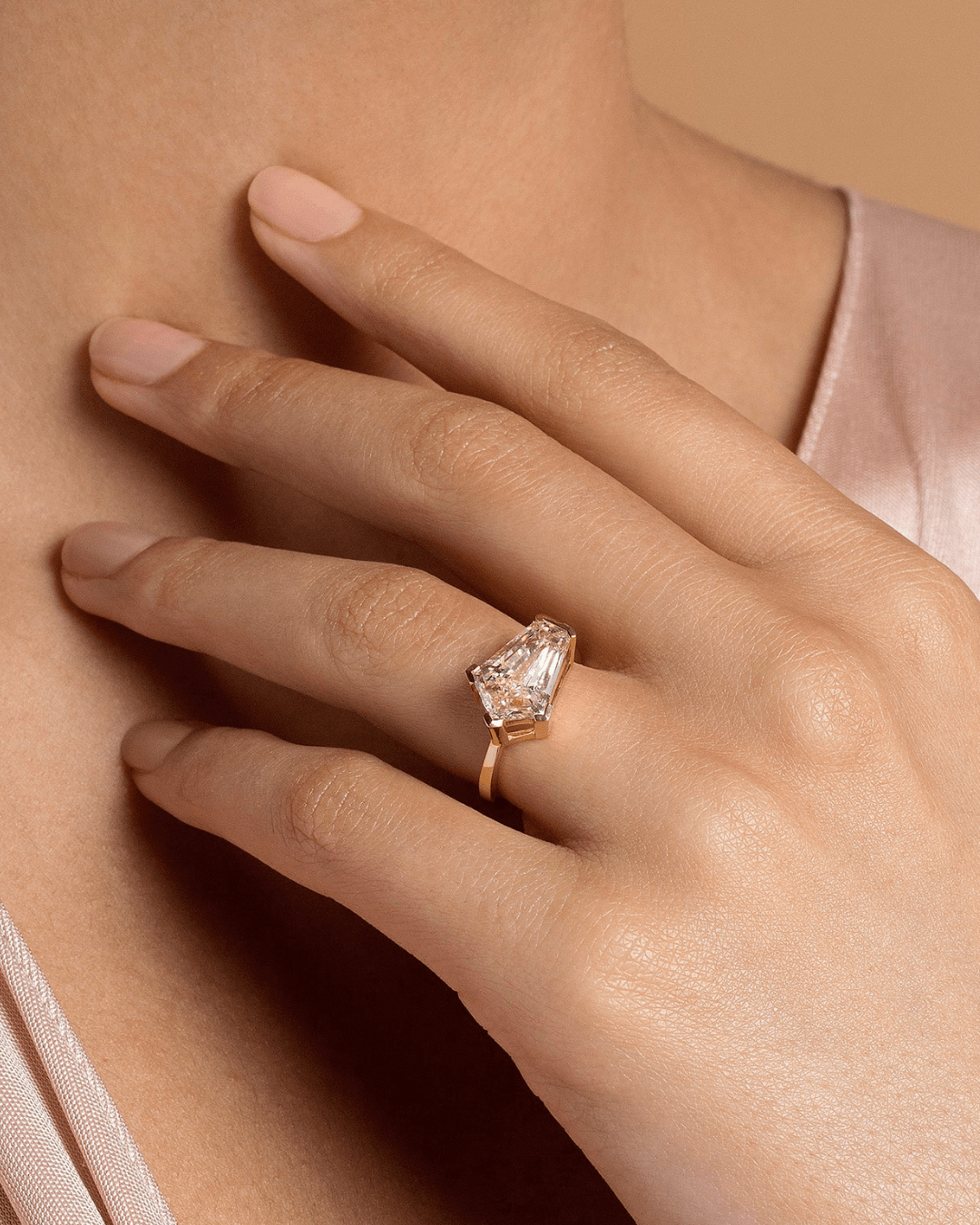
In recent years, diamond cutters have experimented with applying the step cut style to shapes they traditionally cut in the brilliant cut style. The results are striking.
Imagine an oval cut that uses parallel steps instead of brilliant facets, drawing the eye along its curves. Or a kite-shaped diamond, typically cut in brilliant style, reimagined as a step cut with dramatic geometric symmetry. Even octagonal shapes, often associated with colored gemstones, have been transformed into step-cut diamonds.
These hybrids demonstrate the versatility of the step-cut style. They bring a refreshing, architectural edge to shapes we thought we knew, proving that diamond cutting still has room for innovation.
Why Choose a Step Cut?
Step cuts aren’t for everyone, and that’s precisely why people love them. If you want a diamond that shouts its brilliance from across the room, a brilliant cut may be the right choice. But if you want a diamond that draws you in, that feels sleek, sophisticated, and architectural, step cuts deliver.
Their understated sparkle makes them favorites for those who prefer a quieter luxury that rewards close inspection. They can also appear larger for their carat weight because of their broad tables and shallow depths. And for collectors who value rarity, the resurgence of hybrid step cuts means there are now more opportunities than ever to find a stone that feels truly unique.


